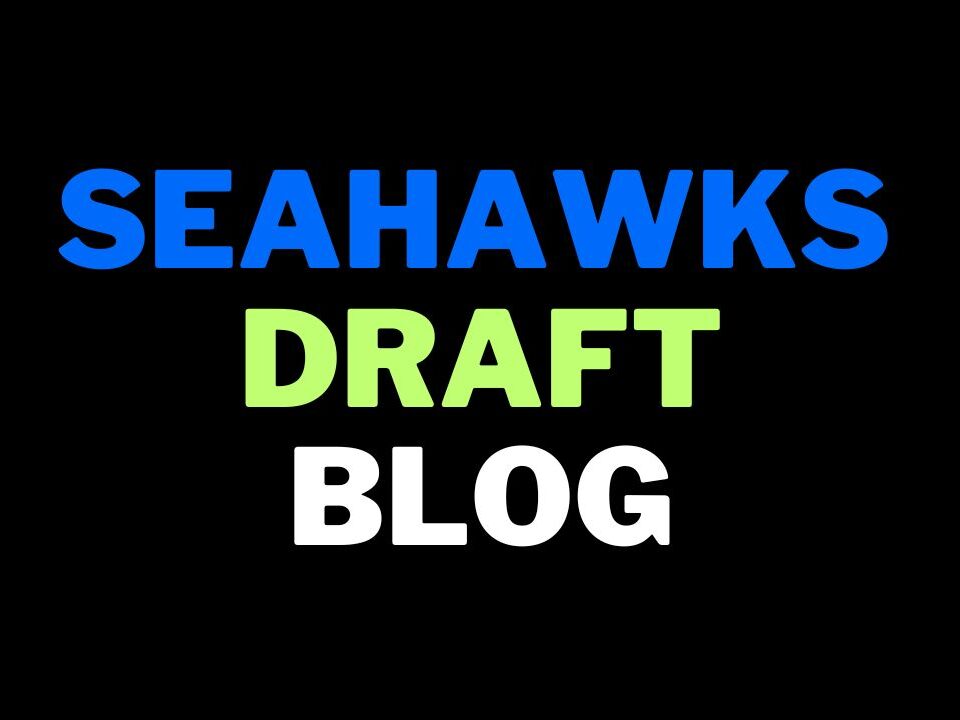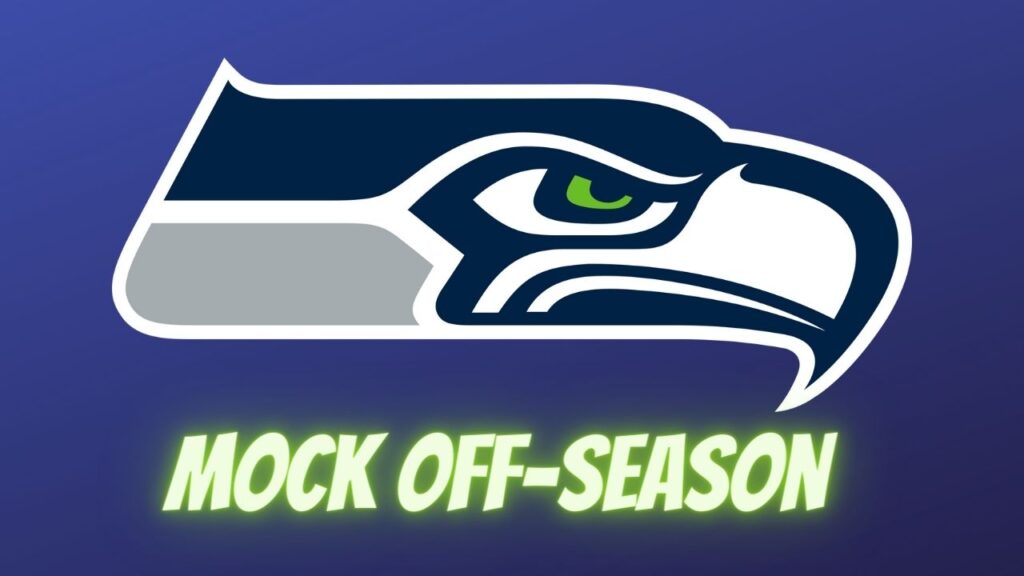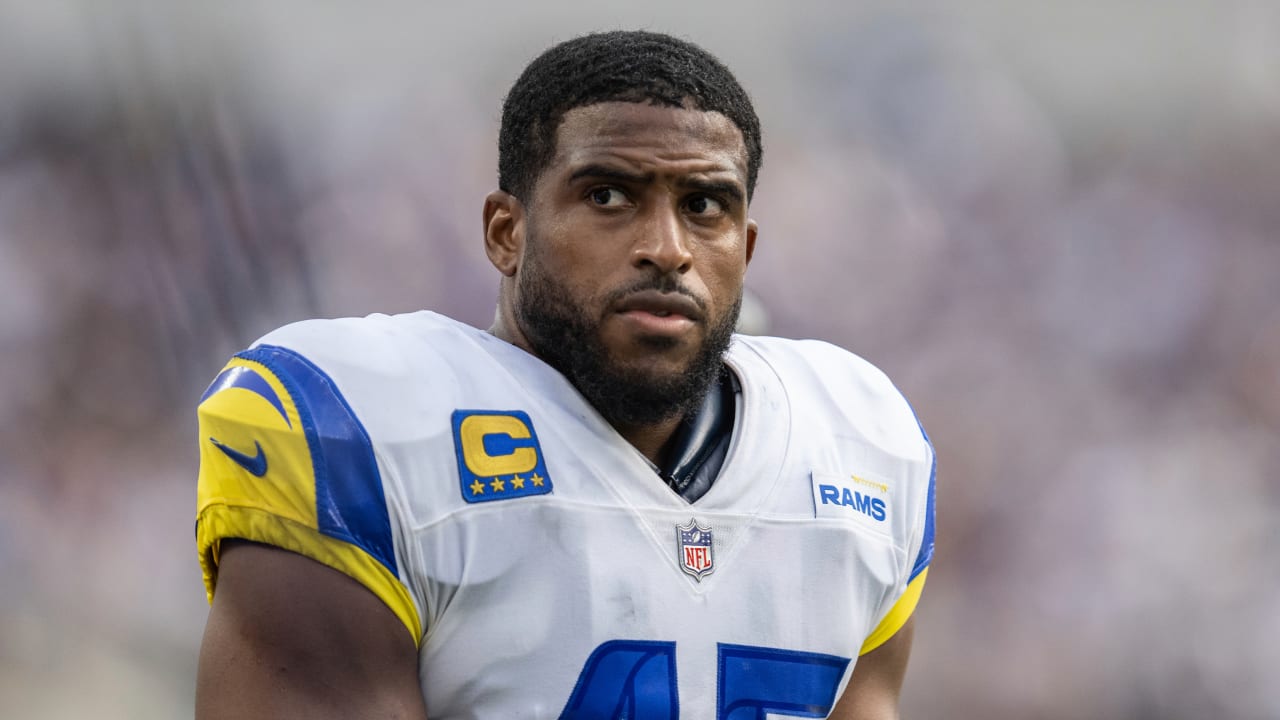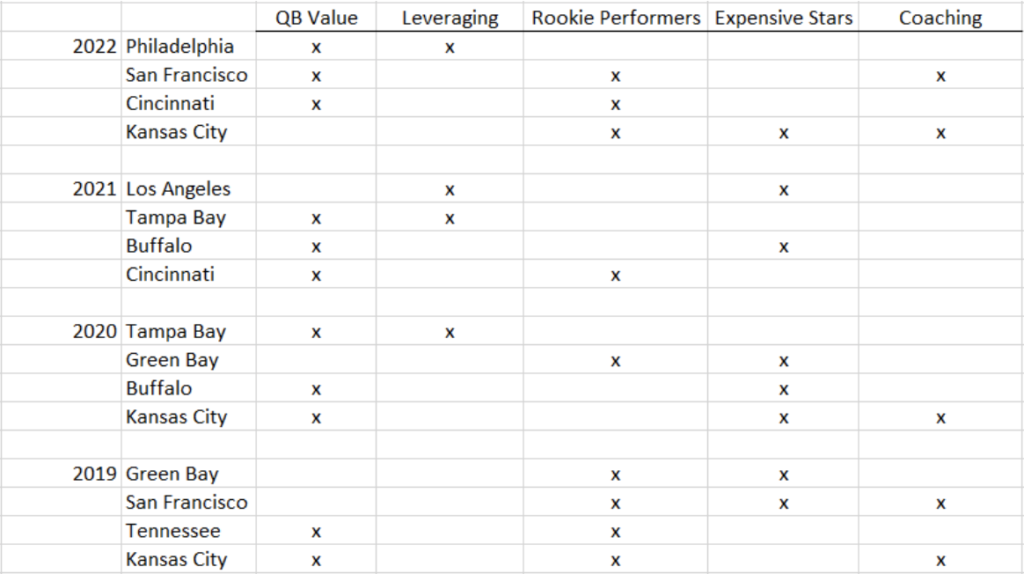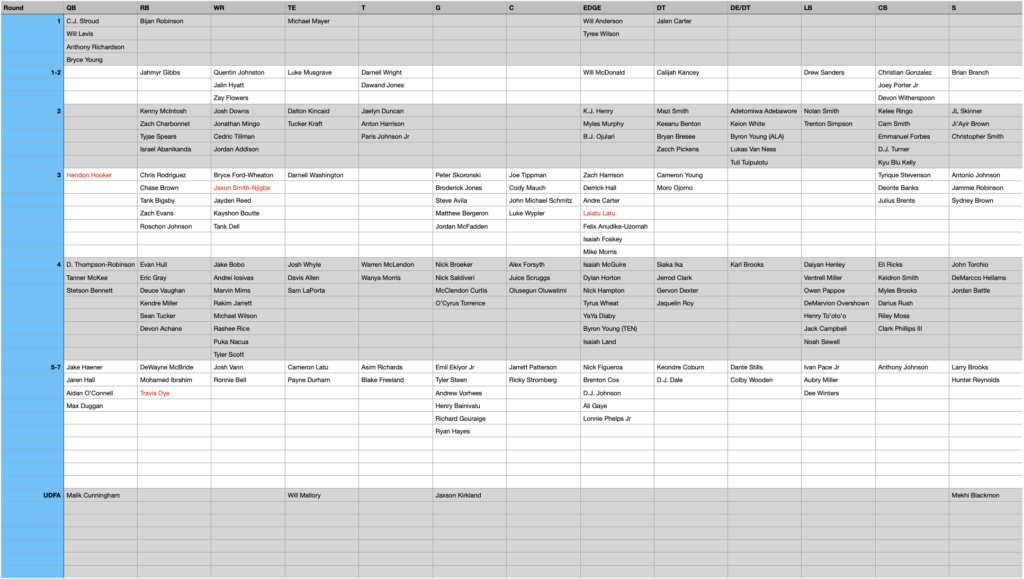
Introduction
This is a very different draft class at the top of the board compared to a year ago. You won’t find a left tackle worthy of a top-10 grade, a year after three were taken in that range. We could see four quarterbacks selected in the top-10 — a stark contrast to last year where just one signal caller was taken in the first two rounds.
There’s depth at running back, defensive end and cornerback — but it’s top-heavy at quarterback and tight end. It’s also light at defensive tackle and safety.
Several players are expected to test brilliantly — including defensive tackle Mazi Smith, receiver Quentin Johnston, tight end Luke Musgrave, defensive lineman Adetomiwa Adebawore and pass rusher Will McDonald.
The top quarterbacks could make headlines — with Anthony Richardson and Will Levis having the kind of arm strength that will have scouts salivating. Both are set to throw and so will C.J. Stroud. Bryce Young will not throw at the combine.
It’s been revealed that Jalen Carter is opting not to do any workouts or drills and neither will Tyree Wilson. Will Anderson is going to do some of the on-field drills but is being made to work with the linebackers.
Travon Walker had an excellent combine last year and was able to propel himself to the #1 overall pick. I’m not sure anyone will repeat that but as with the 2022 class — a lack of obvious blue-chippers will present several players with a big opportunity in Indianapolis.
Changes to the combine
Last year was a shambles and an embarrassment to the NFL.
By opting to move the bench press to the same day as on-field drills, barely anyone participated in it.
The never-ending desire to make even more money also saw the retention of ‘prime-time’ coverage. This meant players were doing drills late into the evening. By the time they’d finished, most skipped the three cone and short shuttle because they were being asked to do it at 9-10pm.
Thankfully there are changes this year but you can easily argue they don’t go far enough.
The bench press is being moved and will once again take place on a separate day to on-field drills. However, it now occurs on the final day of the event for each participant. Previously, it used to take place on the day before drills. I’m not convinced many players will bother to stick around for it, especially those who excel in the testing and feel like they’ve done enough to improve their stock.
Timings have also changed. Last year, the Thursday, Friday and Saturday workouts all began at 4pm ET. Now, the Thursday and Friday sessions begin an hour earlier at 3pm and the Saturday and Sunday workouts start at 1pm.
This is useful because the earlier start time will hopefully encourage players to do the agility testing. Certainly there’s little excuse for the Saturday and Sunday participants not to do the short shuttle and three cone.
I wish all the testing began at 1pm though. The NFL has already tainted its own product by introducing a pointless 17th game and a seventh playoff seed. The need to get every last cent out of the scouting combine — an event that should simply be an information gathering exercise for teams — is the ultimate face-palm.
The order of testing has changed. The D-liners and linebackers will kick things off, followed by the defensive backs. This is a reversal of previous years, where the offensive players began the event.
One other thing to mention is it’s being suggested the league will trial the use of body scans this year for measurements. The hope is that by 2024, they’ll no longer have to measure arm length and hand size in the traditional, manual way — producing a more consistent, accurate result.
Workout schedule
» Thursday 2nd March (3-8pm ET): defensive linemen and linebackers
» Friday 3rd March (3-8pm ET): defensive backs, special teams
» Saturday 6th March (1-8pm ET): tight ends, quarterbacks, wide receivers
» Sunday 7th March (1-7pm ET): offensive linemen, running backs
Horizontal board
Here is how I have graded scouted players going into the combine.
Click the image to enlarge:
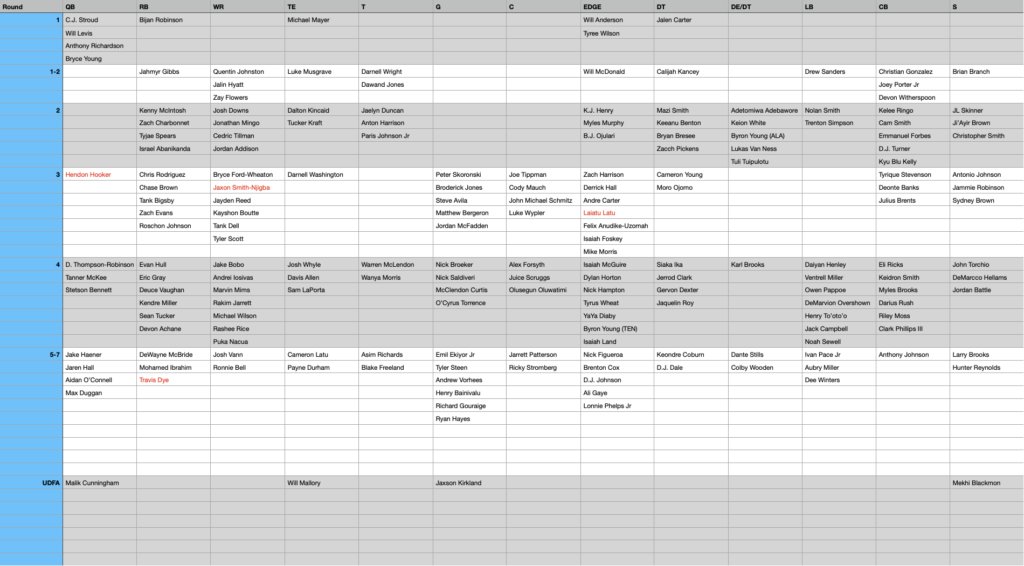
Groups 1-3: DT, DE & LB
Arrival: Sunday 26th February
Team interviews: Monday 27th February
General medical exam: Tuesday 28th February
Media & NFLPA meeting: Wednesday 1st March
Measurements, on-field drills: Thursday 2nd March
Bench press & broadcast interviews: Friday 3rd March
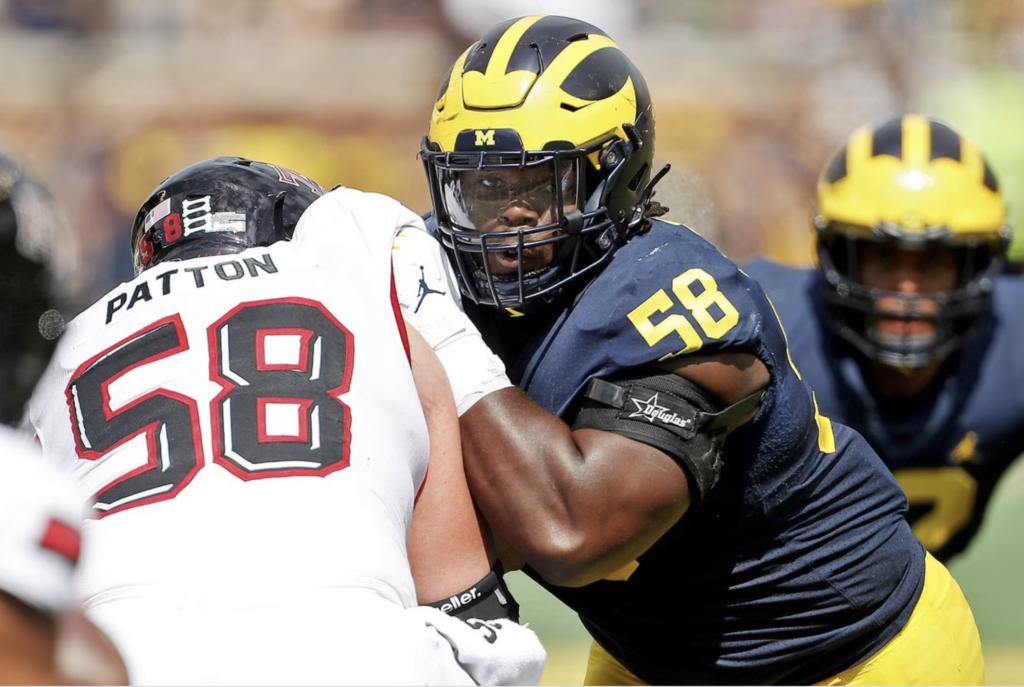
Michigan’s Mazi Smith is expected to be a top performer at the combine
Defensive tackle
None of Seattle’s previous defensive tackle picks have been explosive testers, with an average vertical jump of 26.8 inches among the group. The short shuttle appears to be more important. Seattle has used third round picks on the following:
Naz Jones — 4.63 ss
Jaye Howard — 4.47 ss
Jordan Hill — 4.55 ss
As you can see, all three recorded fantastic shuttles for their size.
They also drafted Pep Livingston in round seven (4.62). Jarran Reed, their highest pick at defensive tackle (round two, 2016) ran a 4.75 which is decent enough given he was seen as a stout anchor for the interior, rather than a dynamic athlete.
Of the eight defensive tackles drafted, six had +33 inch arms. Clint Hurtt spoke about the importance of length at the position during the season. The 33-inch threshold has been important for Seattle and is likely to be a key consideration again.
They have drafted two defensive tackles with sub-33 inch arms but they were Demarcus Christmas and Jesse Williams — two later round picks. Both were well known college players who dropped in the draft (Williams for health reasons, Christmas for poor testing). Both performed badly in the agility testing but ran surprisingly well — Williams recording a 4.92 forty and Christmas a 5.08.
I think it suggests that when there’s a chance to be opportunistic later on, they are prepared to overlook a lack of length. Otherwise it has been a priority.
Key tests
Short Shuttle, Three-cone, 10-yard split, Forty
Ideal size
+6-2, 300-310lbs, +33 inch arms, 4.50-4.65 ss
Positional assessment
This is not a deep DT class but there are some options. Jalen Carter is the headline act at the top of the board but there are legitimate concerns about his maturity and conditioning. It’s now being reported he won’t do any testing at the combine. I can’t imagine this will be well received by teams, with maturity concerns and a feeling that he more or less did what he wanted at Georgia. Calijah Kancey and Mazi Smith are expected to have short arms — perhaps too short for Seattle — but both players are expected to make a star-turn in Indianapolis and be among the best testers at any position. It’ll be interesting to see how Keeanu Benton, Cameron Young and Zacch Pickens perform after playing well at the Senior Bowl. Bryan Bresee, who was too inconsistent at Clemson and missed a lot of games over the last two years, will hope to enhance his stock. He could be one of the top-testers because he’s naturally a fantastic athlete. Keep an eye on his arm length though.
Interesting note
This hasn’t traditionally been a position the Seahawks have invested high stock in. When they took Jarran Reed with the 46th pick in 2016, they traded up using a fourth rounder. Afterwards John Schneider admitted they considered taking Reed with their first round pick (used on Germain Ifedi) and thought the value was too good. Need could heavily influence their decision making in 2023 but typically they have preferred to target the defensive tackle position in the mid-to-late rounds
Best drills to watch
I like to watch the swim/rip drills for defensive tackles. I also like to watch how they get in-and-out of the bags with their footwork and how they punch and move. Who plays with violence, even in this setting?
Five names to watch
Calijah Kancey, Mazi Smith, Zacch Pickens, Keeanu Benton, Moro Ojomo
Potential standout
It has to be Mazi Smith. He was named #1 on Bruce Feldman’s ‘freaks’ list for 2022. He can reportedly run a 4.41 short shuttle at around 337lbs, plus a 6.95 three cone. He’s also explosive — jumping a 9-5 broad and a 33-inch vertical. He might not be Jordan Davis a year ago running the forty but he should still make headlines.
Importance to the Seahawks?
It’s a huge need. Seattle’s defensive line hasn’t been good enough for too long. They need impact disruptors and players who can do a better job clogging lanes against the run. This is likely a position they’ll be watching very closely.

Adetomiwa Adebawore shone at the Senior Bowl and is expected to produce a great workout
Inside/out rushers or 5-techniques
This has typically been a position where the Seahawks have sought difference-making athletes in the draft. The most obvious example of this is Malik McDowell, who they took with their top selection in 2017. At 6-6 and 295lbs he had outstanding length (35-inch arms), agility (4.53 short shuttle) and great speed for his size (4.85 forty plus a 1.69 10-yard split). His explosive testing, however, was relatively poor (28.5-inch vertical) — perhaps further highlighting that explosive traits haven’t been that important to the Seahawks for defensive linemen.
A year later they took Rasheem Green. At 6-4 and 275lbs he also had good length (34-inch arms), great agility (4.39 short shuttle) plus a strong performance in the sprints (4.73 forty, 1.65 10-yard split). Before drafting McDowell or Green, they selected Quinton Jefferson in 2016. At 291lbs he ran a 4.37 short shuttle plus a 4.95 forty with a 1.69 10-yard split.
Given they re-signed Jefferson a year ago to play in their adjusted defensive system, it seems like the profile of these players still matches what they’re looking. Although they certainly need to add at defensive tackle — typically the 3-4 teams have big-bodied five-techniques flanking a nose tackle.
They used a first round pick on L.J. Collier to try and fill this position in 2019. That pick is interesting for two reasons. Firstly — he was a departure from their athletic preferences. He ran a mediocre 4.91 forty and a 4.78 short shuttle. Collier was explosive (30 inch vertical, 9-10 broad jump) and impressed at the Senior Bowl but that’s not typically what they’ve gone for. Secondly — it reinforced, after McDowell, they’re willing to spend a high pick on this position.
The fact that Collier appeared so limited in the NFL could steer them back towards athletes. I suspect the pick was an over-correction from the McDowell situation. Collier was fiery and intense, passionate and seen as an over-achiever at TCU. In the end he just wasn’t good enough. Character clearly still matters though — as we keep hearing from John Schneider. I’m just not sure they’ll spend a high pick on another Collier type. I suspect any prospective pick will need to be a good athlete and have high character.
Key tests
Short Shuttle, Forty, 10-yard split
Ideal size
DL — +6-2, 275-295lbs, +33 inch arms, 4.35-4.50 ss
Positional assessment
There aren’t a lot of options and the players who typically fit the bill are going to go quite early. Keion White is being talked about as a solid first round pick and with a good combine he could confirm that status. He was ranked 20th on Bruce Feldman’s freak list, so a good showing is expected. He’s likely to be out-performed by Adetomiwa Adebawore, however. The Northwestern athlete, who lit up the Senior Bowl, is going to be one of the top-testers. More on that in a bit. Lukas Van Ness is seen by a lot of people as a first round pick despite the fact he didn’t start at Iowa. Tuli Tuipulotu made a lot of splash plays for USC but how he measures and tests will be crucial given his stocky, shorter frame. Personally I’m a big fan of Alabama’s Byron Young and hope that he can perform well enough to back-up what he shows on tape. It’s also worth noting that Young is an all-star when it comes to character.
Interesting note
The Seahawks have selected a defensive lineman with one of their first two picks in seven of the last eight drafts (Boye Mafe, Darrell Taylor, L.J. Collier, Rasheem Green, Malik McDowell, Jarran Reed, Frank Clark). With a strong D-line need this year, the chances are they’ll do it again in 2023.
Best drills to watch
The two I’ll be watching closely is the figure of eight (where a player has to run around two hoops, picking an object up within the first hoop and placing it down in the second) plus the test where they have to run between a line of bags, slapping two away and spinning past one, before rounding a final bag and finishing. These drills show off change-of direction, ankle-flexion, power and quickness.
Five names to watch
Adetomiwa Adebawore, Keion White, Byron Young (ALA), Lukas Van Ness, Tuli Tuipulotu
Potential standout
Despite being 285lbs, Adetomiwa Adebawore is expected to run a 4.05 short shuttle and a 6.90 three-cone. He’s also expected to jump a 10-5 broad and a 37.5-inch vertical. These would be special times for a man his size. You can watch my interview with Adebawore by clicking here.
Importance to the Seahawks?
This might be an even bigger need than defensive tackle. They have a big, stout nose tackle type in Al Woods and he had a good season in 2022. What they need are players who are in the 290lbs range and can play the run but still provide a level of disruption. If one of these players runs a great short shuttle and has the necessary length/size — they could become a big target for the Seahawks.

Will McDonald looks and plays like a Seahawks’ pass rusher
Edge rushers
Twitch seems to be the name of the game here — with a long, lean frame also a preference. The Seahawks have drafted four edge rushers in the first two rounds. Darrell Taylor couldn’t test due to injury — but we can well imagine he would be in a similar range to the names I’m about to bring up.
Bruce Irvin ran a 4.50 forty with a 10-yard split of 1.55. He added a short shuttle of 4.03. Frank Clark ran a 4.68 forty with a 1.58 10-yard split and a 4.05 short shuttle. Boye Mafe didn’t run a shuttle a year ago but he did run a 4.53 with a 1.56 10-yard split. All three players were explosive too — Irvin jumped a 33.5-inch vertical, Clark had a 38.5-inch jump and Mafe was close behind with a 38-inch vertical.
What we need to look out for are splits in the 1.5’s, a top-tier short shuttle in the 4.0’s or 4.1’s and explosive testing in the vertical/broad jumps.
A 10-yard split in the 1.5’s is considered elite. A reminder that Cliff Avril famously ran a 1.50. If you’re running a short shuttle in the 4.00’s with the size of an EDGE or defensive end, that is remarkable.
Even Seattle’s later round picks all performed relatively well in the shuttle. Cassius Marsh (4.25), Obum Gwacham (4.28) and Alton Robinson (4.32) all excelled.
Is arm length as much of a consideration now that the Seahawks are using 3-4 concepts? Possibly not. Mafe measured a shade under the 33-inch threshold, as did Tyreke Smith. Alton Robinson also had 32 3/8 inch arms. I still think great length will be coveted (it always is, by every team) but any prospective EDGE target with 32 inch arms perhaps doesn’t need to be immediately written-off as a potential Seahawk.
Key tests
Vertical, Broad, Short Shuttle, Forty, 10-yard split
Ideal size
6-4, 250lbs, +33 inch arms, 1.50-1.59 10-yard split, +35-inch vertical
Positional assessment
It’s a thick EDGE class with high picks and attractive mid-round options to follow. Will Anderson and Tyree Wilson are being tipped to go very early. They’re making Anderson work out with the linebackers but I’m still including him in this section of the preview. Wilson will not perform drills at the combine as he continues to recover from injury. Personally I think Myles Murphy is overrated but it won’t be a surprise if he creates buzz around his combine performance. Will McDonald will be one of the stars in Indianapolis and could chuck himself into the top-20 mix. K.J. Henry, Zach Harrison, Andre Carter, Dylan Horton and Tyrus Wheat are also very impressive athletes. I could name more — this is one of the deepest positions in the 2023 draft.
Interesting note
As far as I can tell, only three pass rushers ran a 1.5 10-yard split a year ago. Mafe was one of them, plus Kayvon Thibodeaux and Amaré Barno. Let’s hope for a better set of results this year.
Best drill to watch
Given the way Seattle’s defensive scheme has pivoted, we need to spend more time watching how the pass rushers work in space in the linebacker drills at the end of each session. On top of that — generally the edge rusher drills are a box-office performance by the most explosive athletes in college football. So just sit back and enjoy.
Five names to watch
Will Anderson, Will McDonald, K.J. Henry, Myles Murphy, B.J. Ojulari
Potential standout
There are a few who are expected to test brilliantly but I’m going for Will McDonald. He has the ‘preying mantis’ frame that Pete Carroll tends to like. Ranked fifth on Bruce Feldman’s ‘freaks’ list, he can reportedly do backflips standing still and has been filmed jumping over cars. He’s being tipped to jump a 43-inch vertical and an 11-0 broad. He showed great bend and quickness at the Senior Bowl so strong testing results in the 10-yard split and short shuttle are also expected.
Importance to the Seahawks?
It’s hard to say. Clearly they need to keep improving their pass rush but they already have Darrell Taylor, Uchenna Nwosu and Boye Mafe under contract. Having a rotation is necessary but how many high picks are you inserting into a rotational role? They might lean on the depth here and focus on other positions early — unless they simply see the first round value to be too good (and that’s entirely possible given the status of Will Anderson and Tyree Wilson plus the fit of Will McDonald).

Drew Sanders plays with aggression and he’s a useful pass rusher
Linebackers
The Seahawks tend to look for two types of player at linebacker — freakish athletes and players with great short-area quickness and agility.
Shaquem Griffin ran a blistering 4.38 forty. Kevin Pierre-Louis, Korey Toomer, Malcolm Smith and Eric Pinkins all ran excellent times (in the 4.44-4.51 range). Jordyn Brooks ran a 4.54. Bobby Wagner was a 4.4 runner at his pro-day.
Pierre-Louis, Smith and Pinkins all jumped +39 inches in the vertical. Wagner jumped a 39.5-inch vertical.
They’ve also speficially targeted top-testers in the short shuttle. Here are the top-15 short shuttle times run by a linebacker since 2010:
Jordan Tripp — 3.96
Nick Bellore — 4.00
Ben Heeney — 4.00
Mike Mohamed — 4.00
Nick Vigil — 4.00
Kevin Pierre-Louis — 4.02
Stephone Anthony — 4.03
Cody Barton — 4.03
Dakota Allen — 4.03
Von Miller — 4.06
Josh Hull — 4.07
Dorian O’Daniel — 4.07
Avery Williamson — 4.07
Shaq Thompson — 4.08
Ben Burr-Kirven — 4.09
The players in bold have been either drafted or signed by the Seahawks during the Pete Carroll era. A third of the players.
Admittedly, Nick Bellore was signed as a full back. Even so, this isn’t a coincidence. It’s something I wrote about originally six years ago.
If there’s a linebacker who runs an exceptional short shuttle, there’s a decent chance he will be on Seattle’s radar.
Key tests
Forty yard dash, short shuttle, vertical, broad, three cone
Ideal size
+6-0, 230-240lbs, 4.4-4.5 forty, 6.70 three-cone, +10’ broad, 4.00-4.20 short shuttle
Positional assessment
This is not a good linebacker class. Arkansas’ Drew Sanders looks destined to be the first taken and if he tests well, could cement a place in the top-20. After that, you have players with questionable tape or size (Trenton Simpson, Nolan Smith) who are expected to be brilliant testers. There’s also a collection of ‘solid/meh’ college linebackers, some of which are overrated, who aren’t expected to test well (Ventrell Miller, Henry To’oto’o, Jack Campbell, Noah Sewell, DeMarvion Overshown). I’m intrigued to see how Daiyan Henley gets on and Auburn’s Owen Pappoe could be the standout performer at the combine. Overall though there’s a distinct lack of quality.
Interesting note
For years the Seahawks had Bobby Wagner and KJ Wright take virtually all of the defensive snaps. Wagner tallied 99.35% of the snaps in 2016, 93.08% in 2017, 93.34% in 2018, 98.32% in 2019 and 99.13% in 2020. That dropped to 89.1% in 2021 before he was cut. Jordyn Brooks has played 87.4% and 88.67% of the snaps in the last two seasons. Cody Barton played 77.42% of the time in 2022. I’m not sure if this indicative of anything but the Seahawks seem to be trying to avoid giving two players such an extensive workload these days. Or maybe Wagner and Wright were too good to take off the field?
Best drill to watch
Due to the importance of the short shuttle — look how the players work in space, backpedal and read/react. Quickness and change of direction is vital at linebacker.
Five names to watch
Drew Sanders, Nolan Smith, Trenton Simpson, Owen Pappoe, Daiyan Henley
Potential standout
Nicknamed ‘the freak’ — Owen Pappoe is reportedly capable of running in the 4.3’s. Even if he doesn’t top that mark, expect a big show. If only his tape at Auburn was as impressive as his athleticism. Honourable mentions go to Trenton Simpson who is also being tipped to run in the 4.3’s (and although his tape isn’t as bad as Pappoe’s — he still had a poor year in 2022). Meanwhile Nolan Smith was a SPARQ superstar in High School. If he’s healthy enough to test, watch out.
Importance to the Seahawks?
The injury to Jordyn Brooks means they have to do something. I’m just not sure how much investment they want to make at linebacker. A year ago they cut Bobby Wagner to save $16.6m and then didn’t replace him. They simply rolled with Brooks and Cody Barton. There wasn’t even any serious competition added for camp. With Barton a free agent, they need to add a body. Unless they’re enamoured with someone like Drew Sanders it might be a position they address in the mid-to-late rounds. If nobody tests to their satisfaction in that range, they might go the cheap veteran route. Are they willing to take a great athlete early, full of potential, with disappointing tape? If so, that could bring Trenton Simpson into play but he’s more athlete than football player currently. Sanders does play with a fiery intensity that Seattle’s second level misses at times.
Groups 4-6: cornerback, safety & special teams
Arrival: Monday 27th February
Team interviews: Tuesday 28th February
General medical exam: Wednesday 1st March
Media & NFLPA meeting: Thursday 2nd March
Measurements, on-field drills: Friday 3rd March
Bench press & broadcast interviews: Saturday 4th March
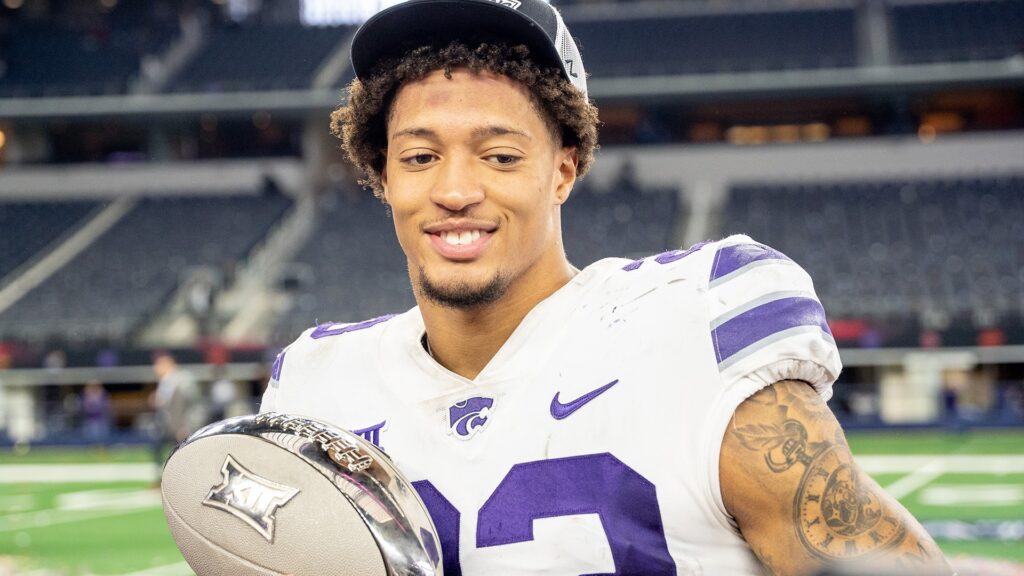
Julius Brents has promised to surprise people at the combine
Cornerbacks
For years everyone knew what the Seahawks liked in a corner. You had to have 32 inch arms. You had to be long and lean. Then, in 2021 — things changed. They drafted Tre Brown in round four. He was small (5-10, 186lbs) and had 30 3/8 inch arms. Carroll and Schneider talked about changing their approach, after experiencing the success of D.J. Reed before he joined the New York Jets in free agency.
However, just as we were all adapting to a brave new world, the Seahawks found their ideal cornerback with prototype size in Tariq Woolen.
Granted, they also took Coby Bryant with his 30 5⁄8-inch arms in the fourth round. Will the success of Woolen steer them back towards a desire for length and size? There are certainly players in this class who fit the bill — and some are great athletes too.
We noted a year ago that Clint Hurtt talked about utilising man-coverage. A more pressing question these days should be ‘how are your skills in man-coverage’ rather than ‘how long are your arms?’.
As long and lean as Woolen is, he’s also lightning quick. He ran a 4.26 forty. Bryant wasn’t especially slow either, running a 4.48.
Slower cornerbacks are better suited to zone, quicker cornerbacks are typically targeted to play man. You’re often facing 1v1 challenges where you have to sprint great distances, matching the receiver. You need good recovery speed. Size isn’t as important and physicality is just a bonus.
So while the long cornerbacks will likely remain attractive — keep a closer eye on the forty yard dash and which cornerbacks have fluidity, suddenness, smooth hips and an ability to change direction easily during drills.
It is also worth stressing that the Bryant and Woolen picks were day three selections. Carroll/Schneider still haven’t taken a corner any higher than the very end of round three (Shaquill Griffin). The approach in terms of arm length might be adapting but there’s no new evidence that they’re more likely to draft a cornerback early.
Key tests
Forty, Vertical
Ideal size
+5-10, 195lbs, +32-inch arms, 4.30-40 forty, +35-inch vertical
Positional assessment
It’s a deep cornerback class. There isn’t a clear top-10 pick but there are players who could work into that range if they test well, such as Oregon’s Christian Gonzalez (and he is expected to test well). We could see a cluster of players taken in the top-40, due to the importance of the position. I think we’ll see relative depth stretching into round four and there’s a chance the combine will unearth some hidden gems.
Interesting note
The Seahawks drafting two cornerbacks last year was actually a welcome return. In the four prior drafts, they’d only drafted one player at the position. For a team with a good history of developing cornerbacks, it was quite a surprising run. Their work with Woolen and the way they turned D.J. Reed and Michael Jackson into useful players is encouraging for the future. If you’re a cornerback expected to be taken after round three, you probably want to be drafted by Seattle.
Best drill to watch
The backpedal drill. Watch to see how the cornerbacks transition and whether it looks effortless. Do they have loose hips and do they explode out of their breaks? Is the footwork smooth or clunky? Are they laboured in any way or do they look natural?
Five names to watch
Christian Gonzalez, Devon Witherspoon, Kelee Ringo, D.J. Turner, Julius Brents
Potential standout
Christian Gonzalez will excel and big things are expected of Kelee Ringo and D.J. Turner. I’m going to suggest Julius Brents, however. He’s expected to test brilliantly in the vertical jumps and he looked quick and smooth at the Senior Bowl. When I interviewed him recently he said he’s going to surprise people at the combine. He’s my one to watch — especially as he’d look very good across from Tariq Woolen.
Importance to the Seahawks?
Michael Jackson is an exclusive-rights free agent so he’ll likely be back. With Woolen, Bryant and Brown under contract they have some depth. However, there’s at least room for a couple more names to be added. Perhaps they’ll add one later in the draft and look to sign a cheap veteran in the Artie Burns mould?

Ji’Ayir Brown — the emotional voice of the Penn State defense
Safeties
After hitting on Earl Thomas and Kam Chancellor in 2010, Seattle hasn’t had much success at the safety position. Ryan Murphy, Winston Guy, Mark LeGree, Tedric Thompson, Delano Hill and Marquise Blair have come and gone. The less said about the Jamal Adams trade the better.
Thankfully, the Quandre Diggs trade worked out — although whether he’s worth the $18m cap hit he’s going to receive in 2022 is a question mark (especially with finances tight). Ryan Neal has been an absolute steal and has developed into the kind of tone-setting, vocal player Seattle craves. He’ll surely be kept as a restricted free agent. Hopefully in the future the Seahawks will focus more on the Neal-style bargains instead of trading first round picks or spending $36m on two safeties.
For what it’s worth — Neal ran a 4.47 forty and a 4.29 short shuttle, while jumping a 37.5 inch vertical and a 10-7 broad at his pro-day. He was undrafted and spent time with the Eagles and Falcons before joining the Seahawks.
There’s a real mix of physical profiles in the players they’ve taken, making safety one of the tougher positions to project. It’s hard to describe a Seahawks ‘type’ physically. The only safety they’ve drafted in the first round (Earl Thomas) was a tremendous athlete. He ran a 4.37 at his pro-day after pulling a hamstring running the forty at the combine (while still managing an official 4.49). Blair, their next highest pick at the position, was also athletic and hit like a sledgehammer.
It’s a bit basic to describe it this way but you might be best served looking for playmakers and hitters. Thomas and Thompson both had a lot of picks. Chancellor, Guy and Blair loved to hit.
This might be a position where physical ideals take a back-seat to production or attitude/impact.
Key drills
Forty yard dash, short shuttle, vertical
Ideal size
+6-0, 200-220lbs, 4.4 forty, +39-inch vertical, +10-5 broad jump
Positional assessment
College football isn’t churning out a lot of quality players at the position and it’s another light year. There are certainly players to like — but once they’re gone, there’s not a lot to get excited about. Brian Branch is a Rolls Royce and should find a home within the top-20. J.L. Skinner shares some of Kam Chancellor’s qualities as a hitter with great size. Sadly it’s been announced he tore a pec in training on Friday and will now miss the combine. Ji’Ayir Brown has a knack for interceptions and is well regarded as the high-character, vocal leader of Penn State’s defense. Christopher Smith had a good year for Georgia and has great range and hits well for his size. Sydney Brown is a big-time athlete. I also think there are some slightly overrated players — including Antonio Johnson, DeMarcco Hellams and Jordan Battle. Later round guys I like include John Torchio, Larry Brooks and Hunter Reynolds — but none were invited to the combine.
Interesting note
Both Earl Thomas and Tedric Thompson had a lot of interceptions in their final college seasons and both were drafted to play free safety. Thomas had eight picks for Texas in 2009, Thompson had seven for Colorado in 2016. Ji’ayir Brown had 10 interceptions in his final two years at Penn State and is the closest thing to Thomas and Thompson in terms of production. This combined with his vaunted character means Brown is one to watch.
Best drill to watch
Any of the drills requiring the safeties to close in space and show off their open-field quickness and range. I also like the ‘W’ drill for this position.
Five names to watch
Brian Branch, Ji’Ayir Brown, Christopher Smith, Sydney Brown, Jammie Robinson
Potential standout
Brian Branch and Ji’Ayir Brown are both expected to test very well but the name to mention here is Sydney Brown. Ranked joint 33rd on Bruce Feldman’s ‘freaks’ list with brother Chase, he looked in fantastic shape at the Senior Bowl and has registered a top-speed of 22.4mph during a game. Expect a big workout from the Brown brothers in Indianapolis.
Importance to the Seahawks?
You can look at this two ways. Firstly, is some long-term planning required? Quandre Diggs is 30 and there’s an easy out on his contract next year. The team has control of Ryan Neal for only one more season. Who knows what the future holds for Jamal Adams? Drafting someone now could set-up a transition. However, they’ve already committed $36m to Diggs and Adams and will retain Neal via a tender (second round?). How much more are you prepared to invest when there are needs elsewhere to address?
Groups 7-9: QB, WR, TE
Arrival: Tuesday 28th February
Team interviews: Wednesday 1st March
General medical exam: Thursday 2nd March
Media & NFLPA meeting: Friday 3rd March
Measurements, on-field drills: Saturday 4th March
Bench press & broadcast interviews: Sunday 5th March
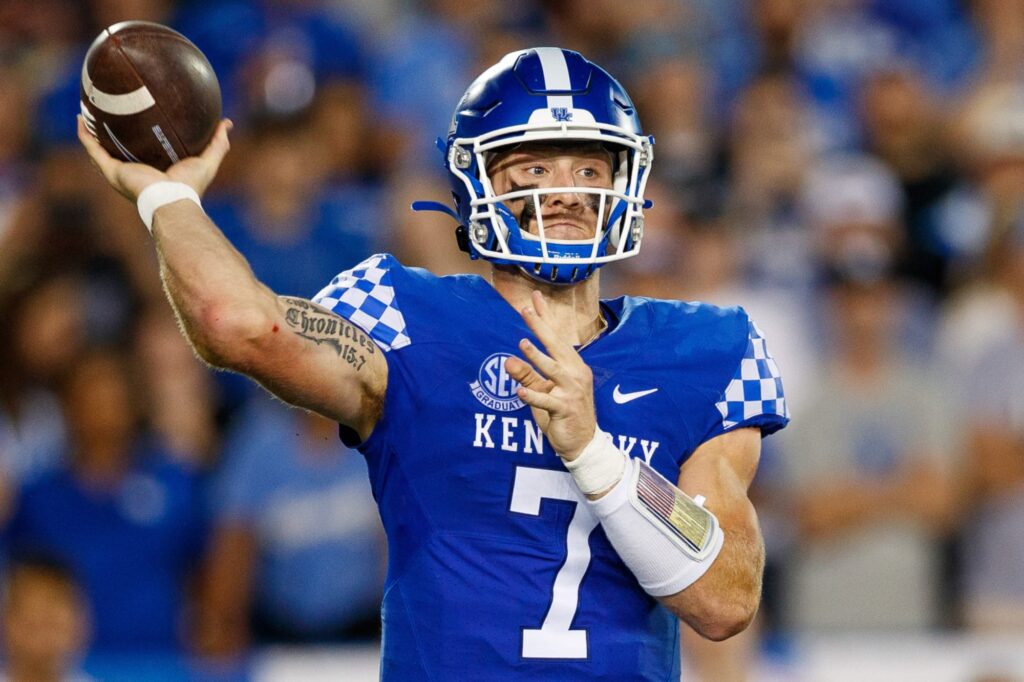
Will Levis has the kind of tools John Schneider likes
Quarterbacks
It’s been a long time since I’ve had to write anything in this section. The Russell Wilson trade was still being laughed-off at the 2022 combine, as a deal was being struck between the Seahawks and Broncos behind the scenes.
Many fans get angry when you mention the position as a need for the Seahawks, following Geno Smith’s surprisingly productive 2022 season. The fact is whether Smith re-signs or not, it’s still entirely possible the Seahawks select a quarterback with the fifth overall pick, or at some stage in this draft.
I don’t want to go over too much old ground here but it comes down to this, purely and simply. If John Schneider sees a quarterback he really likes — and if that player is available at #5 — the chances are he’s going to draft him. The Seahawks have never owned a pick in the top-five during the Carroll/Schneider era. This is a rare opportunity. If Schneider sees a QB he loves, he will take him — with or without Geno on the roster.
Schneider has a duty to think about the long term health of the franchise. His contract outlasts Pete Carroll’s. The Seahawks can’t exist purely to give Carroll a nice send-off. That’s assuming that Geno is even capable of delivering such an ending.
Let’s not lose sight of the fact we’re talking about the most important position in the sport. The best-case scenario for the Seahawks is to retain Smith on a relatively team-friendly contract, then draft a QB for the future. They’d be re-creating the Alex Smith/Patrick Mahomes handover. We’ve seen too many young QB’s struggle because they’ve been thrown in at the deep-end too soon. Here’s an opportunity for the Seahawks to get the best of both worlds. Keep a player who can help you win now but also set things up for the future. Plus you still have picks #20, #38, #53 and #84 to address your defense.
If Schneider doesn’t like the quarterback options at #5, it’s a moot-point. They’ll take a defensive lineman and move forwards.
I feel very comfortable about the situation either way and wish more fans shared that thought. I trust Schneider when it comes to QB’s. We’ll give him a mulligan for the expensive Charlie Whitehurst trade. Since then he’s drafted Russell Wilson and reportedly had high interest in Patrick Mahomes and Josh Allen — so much so, he was willing to move off peak-Wilson to get either player.
Thus, if he takes a QB — he should be given the benefit of the doubt. If he doesn’t take a QB, we can all assume with confidence there simply isn’t a player he rated highly enough.
It’s not a deep quarterback class by any stretch. There are four I think deserve to go in the top-10. Then there’s a big drop-off. Hendon Hooker will likely be the fifth taken but his stock is a mystery given his knee injury. He could end up being taken earlier than he should be, purely because there’s a gaping black-hole once he’s off the board.
Some things to consider in terms of Seattle’s possible preferences — Whitehurst, Wilson, Mahomes, Allen and Drew Lock all have big arms. All but Wilson have prototype stature. Mahomes is creative and able to extend plays — while Allen, Lock and Wilson were all excellent athletes. Even Whitehurst could move around a bit.
Much is made of hand size and that could be important. Wilson had 10 1/4-inch hands. However — Mahomes only has 9 1/4-inch hands and Lock’s are even smaller at exactly nine-inches. It might be more of a bonus than a factor.
It’s also worth noting that this is a quarterback class full of high-character, high-intelligence players. Levis, Stroud and Young are beloved by their teams. You can watch my interview with Levis by clicking here. Richardson is well regarded at Florida. Hooker is extremely mature and respected. There are no concerns with the top group and it won’t be a surprise if many of the QB’s get glowing reports for the way they interview at the combine.
Key tests
Deep throws, Forty
Ideal size
+6-2, 220lbs, +9.5 inch hands
Positional assessment
Fans and the media alike are tying themselves up in knots about this class. It often feels like when you have good quarterbacks, people find reasons to knock them. When you have a bad class — people find ways to elevate them. We saw that a year ago, when clear third-round talents like Malik Willis were suddenly being mocked second overall to the Lions. Heck, this was still being talked about as a possibility in April (click here and here). I think the top-four quarterbacks in this class — C.J. Stroud, Will Levis, Anthony Richardson and Bryce Young — are all worthy of being taken with the #5 pick. None are flawless. Neither was Patrick Mahomes, Josh Allen or Justin Herbert. In particular I think the physical traits of Stroud, Levis and Richardson will really appeal to John Schneider, while the creativity and mentality of Young will also likely make him a favourite. Beyond the top-four, I suspect teams will have different opinions on Hendon Hooker who is high-character and enjoyed a productive two-years in Tennessee. However, he played in a wide-open offense and is recovering from a serious knee injury. He’s also 25-years-old and already older than Jalen Hurts. Dorian Thompson-Robinson has a lot of intriguing qualities but he is even smaller than Young and Tanner McKee just screams Mike Glennon 2.0.
Interesting note
The Seahawks have only drafted two quarterbacks in the Carroll/Schneider era — Russell Wilson (third round, 2012) and Alex McGough (seventh round, 2018).
The best drill to watch
Everyone wants to see the top QB’s throw the deep ball. I used to think it was a waste of time at the combine but I’ve changed my mind. It’s a great way to compare all of the QB’s because they’re throwing in the same setting. You can do an apple’s for apple’s comparison — without all the home comforts of a pro-day. It’s been confirmed that Anthony Richardson and C.J. Stroud will both throw at the combine. Bryce Young will not throw. There’s no news on Will Levis at the moment, who has been recovering from a broken toe suffered during the season.
Five names to watch
C.J. Stroud, Will Levis, Anthony Richardson, Bryce Young, Dorian Thompson-Robinson
Potential standout
Will Levis isn’t a lightning quick straight-line runner but he’s a gym-rat who should test well in the jumps and short shuttle — plus he has an outstanding, elite-level arm. However — this should be Anthony Richardson’s stage. He has an opportunity to do everything well, starting with the forty. Reportedly he intends to take part in all drills and tests. He has a rocket arm to launch the ball downfield. He can make some serious money in Indianapolis.
Importance to the Seahawks
I appreciate that many disagree and want the Seahawks to pay Geno Smith a small fortune, then build up the rest of the roster. Again, I trust Schneider on quarterbacks and will be comfortable if he goes QB or DL at #5. However, for me the whole Russell Wilson trade has been building up to this moment. You have a rare opportunity to invest in a talented, physically gifted young signal caller for the long-term future. You also have the benefit of having four more picks in the first three rounds to address other areas of the team. It makes perfect sense — whether you keep Smith or not — to consider drafting a quarterback at #5.
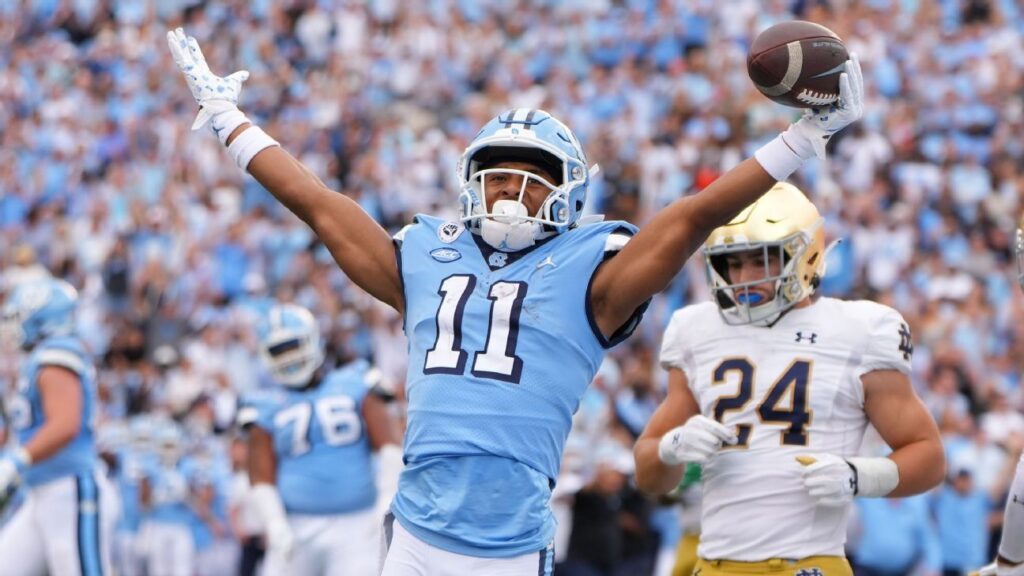
Josh Downs looks like a Tyler Lockett clone
Wide receivers
Pete Carroll has only drafted three receivers who didn’t run a 4.4 forty or faster:
Kenny Lawler — 4.64
Chris Harper — 4.50
John Ursua — 4.56
The rest all cracked the 4.4’s:
Paul Richardson — 4.40
Golden Tate — 4.42
Tyler Lockett — 4.40
Kris Durham — 4.46
Kevin Norwood — 4.48
Amara Darboh — 4.45
David Moore — 4.42
D.K. Metcalf — 4.33
Freddie Swain — 4.46
Dee Eskridge — 4.38
Bo Melton — 4.34
Dareke Young — 4.44
We have enough data now to say definitively — unless a player runs a 4.4 or faster, the Seahawks are unlikely to consider them until the later rounds (if at all). Clearly they value speed and suddenness at the position even if you’re a ‘bigger’ receiver.
The entire NFL acknowledges the need for speed. The days of the classic ‘possession’ receiver are over. Teams are utilising tight ends in a variety of creative ways to get a sizeable mismatch target on the field. For receivers playing outside or in the slot, quickness is the desired trait.
Positional assessment
If college football isn’t churning out many safeties, it’s doing a good job producing capable wide receivers. The 2023 class isn’t as good as we’ve come to expect in recent years — but there’s still a cluster of names and decent depth stretching into day three. There isn’t an obvious player destined for the top-10 but Quentin Johnston, Jalin Hyatt and Zay Flowers are a good bet for the first round. Josh Downs, Jonathan Mingo, Cedric Tillman and Jordan Addison could also find a home in the top-50. It’ll be a big week for Jaxon Smith-Njigba — he has to prove he’s quicker than expected after running a 4.64 at SPARQ. Keep an eye on Bryce Ford-Wheaton — he’s flying way under the radar and should test well in Indianapolis. Jayden Reed, Kayshon Boutte, Tank Dell and Tyler Scott are other names to monitor.
Interesting note
Carroll’s Seahawks don’t really have a ‘range’ where they take receivers. They’ve drafted four players in round two (Tate, Richardson, Metcalf, Eskridge), two in round three (Darboh, Lockett), three in round four (Norwood, Harper, Durham), one in round six (Swain) and five in round seven (Moore, Lawler, Ursua, Melton, Young). It’s worth noting they’ve been aggressive in trading up for two players — Lockett and Metcalf. They’ve also been their best ‘hits’ at the position. Is there a player they like enough to be similarly aggressive for this year?
Key tests
Forty, vertical, catching drills (proper technique)
Ideal size
Just run a 4.4 forty or faster
The best drill to watch
Any drill that clearly shows catching technique. It’s extremely important. You want to see a receiver cupping his hands while presenting to the ball. No alligator arms, no fighting the ball or snatching at it. Watch the downfield throws and see who is good at high pointing the football, showing body control and tracking over the shoulder. Who is a natural hands catcher? I would expect Josh Downs and Jonathan Mingo to excel in both areas.
Five names to watch
Quentin Johnston, Jalin Hyatt, Josh Downs, Jonathan Mingo, Bryce Ford-Wheaton
Potential standout
Unsurprisingly there are high expectations with the group. Jalin Hyatt’s late separation skills hint at extreme speed. Zay Flowers’ ability to change direction could make for a pair of blistering agility tests. Bryce Ford-Wheaton can jump a 40-inch vertical and has been timed running a 4.02 short-shuttle and a 6.68 three-cone. Tyler Scott is being tipped to run in 4.2’s and he’s also jumped a +40-inch vertical. However, based on size and extreme testing, Quentin Johnston is the one to watch. At 6-4 and around 210lbs he is expected to nail a 42-inch vertical and maybe even break the 4.3’s. If he does, it’ll be interesting to see what impact that has on his stock. He’s inconsistent at times but he has rare physical qualities.
Importance to the Seahawks
Most successful teams in the NFL have three quality weapons. That can include a tight end — but generally in the modern NFL you’re passing attack needs three legit targets. The Seahawks clearly have two in Lockett and Metcalf. They mixed their tight end production around without any one individual rising to the top. They’ve struggled in recent years to find a third receiver, highlighted by the pick used on Dee Eskridge which clearly hasn’t worked out. They’re high on Dareke Young but I still think there’s room for a pick at receiver if the right player is available. I think they’d consider a ‘big slot’ type who they can move around — and Jonathan Mingo would fit the bill if he can crack the 4.4’s. Josh Downs, meanwhile, just screams ‘Seahawks’. His playing style is so similar to Lockett’s. He’s a very mature individual with NFL bloodlines (his father played in the league and his uncle is Dre Bly). He already talks like a seasoned veteran. He high points the ball brilliantly for his size, can get downfield to make big plays but he’s also good on the short-stuff too. Fingers crossed he runs well. I can imagine him being a ‘must have’ player for the Seahawks.

Michael Mayer is a fantastic player
Tight ends
Seattle has drafted five tight ends under Pete Carroll — Nick Vannett, Luke Willson, Anthony McCoy, Will Dissly and Colby Parkinson. They also traded for Jimmy Graham in 2015 and signed Zach Miller to a big contract in 2011. In the last four years they have signed Greg Olsen and Gerald Everett to one-year deals and brought in Noah Fant as part of the Russell Wilson trade.
One thing links all ten players — agility testing.
Short shuttle and three cone.
It appears the Seahawks see it as vital:
Luke Willson — 4.29 (ss), 7.08 (3c)
Will Dissly — 4.40 (ss), 7.07 (3c)
Nick Vannett — 4.20 (ss), 7.05 (3c)
Anthony McCoy — 4.57 (ss), 6.99 (3c)
Zach Miller — 4.42 (ss), 7.01 (3c)
Jimmy Graham — 4.45 (ss), 6.90 (3c)
Greg Olsen — 4.48 (ss), 7.04 (3c)
Colby Parkinson — 4.46 (ss), 7.15 (3c)
Gerald Everett — 4.33 (ss), 6.99 (3c)
Noah Fant — 4.22 (ss), 6.81 (3c)
Tony Pauline also linked the Seahawks with interest in free agent Austin Hooper before he signed with Cleveland. He ran a 4.32 short shuttle and a 7.00 three cone. It was speculated that Seattle really liked O.J. Howard in the 2017 draft. He had the top short shuttle in his class (4.16) and a fantastic three cone (6.85). After acquiring Fant last year, John Schneider said they were preparing to draft him in 2019 before the Broncos selected him with the 20th pick.
Short-area quickness and agility appear to be important for any prospective Seahawks tight end so pay close attention to the short shuttle and the three cone.
This is an understandable approach to the position when you consider the top tight ends in the league. They generally all have the same thing in common — strong agility testing and a good 10-yard split.
Rob Gronkowski — 1.58 (10), 4.47 (ss)
Travis Kelce — 1.61 (10), 4.42 (ss)
George Kittle — 1.59 (10), 4.55 (ss)
Mark Andrews — 1.54 (10), 4.38 (ss)
Dallas Goedert — unknown (10), 4.31 (ss)
Zach Erz — 1.64 (10), 4.47 (ss)
T.J. Hockenson — 1.63 (10), 4.18 (ss)
People will focus on the forty yard dash, particularly with players such as Michael Mayer who won’t run a fast time. However — the more important numbers to focus on are the split, the shuttle and the three cone.
Key tests
Short shuttle, three cone, 10-yard split
Ideal size
6-5, 250-265lbs, +33-inch arms, +10-inch hands
Positional assessment
There are a cluster of players set to go in the first two rounds but it’s a top-heavy class. For me, Michael Mayer is a complete tight end and a class act. He’s one of the safest picks you can make in the draft and will combine committed blocking with consistent hands, production, an ability to create late separation and he does a superb job catching away from his body. Luke Musgrave will be one of the stars of the combine — we’ll discuss why in a moment. Dalton Kincaid will not test and he’s expected to miss the entire pre-draft process due to injury. Tucker Kraft flies under the radar but could easily be a top-50 pick. I think Darnell Washington is a bit overrated. He’s too big and doesn’t move freely enough to be a serious receiving threat. His size should be useful as a blocker, however. After that — there’s not much to get at.
Interesting note
In 2017 the Seahawks needed a tight end and were presented with a strong looking class. Unexpectedly, they passed on the position. They drafted seven players before George Kittle was selected in round five by the 49ers — despite his good combine and dynamism as a blocker. Seattle even spent five picks in rounds 3-4 without taking Kittle. A huge blow, especially given he was eventually drafted by a division rival.
Best drill to watch
Catching technique is always important so look for how a player uses his hands. Is he cupping them to the ball? I always like to see TE’s who can move naturally on seam routes and change direction during drills. It’s quite easy to spot stiffness among this group when they’re running in the open field.
Five names to watch
Michael Mayer, Luke Musgrave, Tucker Kraft, Darnell Washington, Josh Whyle
Potential standout
It has to be Luke Musgrave. It was noticeable how smooth he looked running routes at the Senior Bowl and his testing numbers will no doubt show well. He’s been timed running a 4.51 forty and a 4.21 short shuttle.
Importance to the Seahawks?
There’s no immediate need but this could be a situation where they look to the future. Noah Fant and Colby Parkinson are both free agents in 2024. There’s an easy out on Will Dissly’s contract next year. If BPA matches up with this position, they might be tempted to think ahead.
Groups 10-12: OL, RB
Arrival: Wednesday 1st March
Team interviews: Thursday 2nd March
General medical exam: Friday 3rd March
Media & NFLPA meeting: Saturday 4th March
Measurements, on-field drills: Sunday 5th March
Bench press & broadcast interviews: Monday 6th March
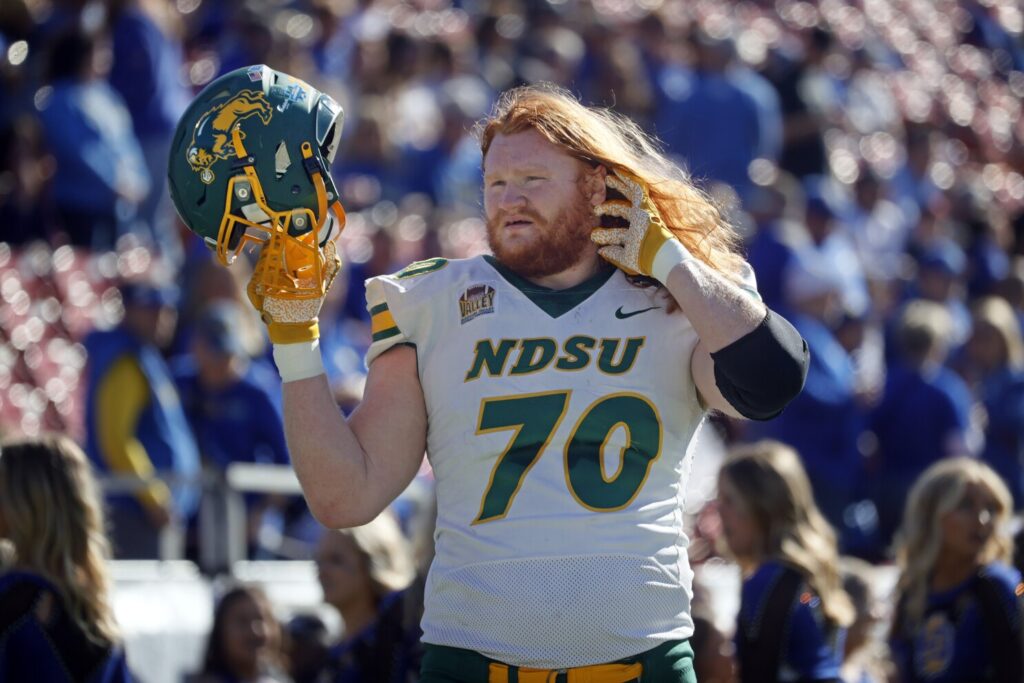
Cody Mauch — talented player, great hair
Offensive linemen
This has typically been the point where I introduce ‘TEF’ — the formula we created to calculate explosive testing. In the past it helped us identify potential O-line targets for the Seahawks successfully.
Up until 2020 it still seemed to be somewhat relevant. Damien Lewis was an explosive tester and Phil Haynes — drafted in 2019 and recently re-signed — was the second best TEF scorer in his class.
However, both players were drafted when Mike Solari was the offensive line coach. Andy Dickerson took over a year ago and the Seahawks then drafted two non-explosive offensive tackles with high picks.
Charles Cross didn’t do a bench press or broad jump before the draft, so it was impossible to judge how truly explosive he was. However, his 26-inch vertical was not good. Generally you want to see players jumping in the 30-inch range.
Abraham Lucas only scored a 2.73 through TEF. He was not an explosive tester.
The Seahawks are copying the Rams’ blocking scheme and over the years, they haven’t placed much emphasis on explosive traits. Here are some of the linemen they’ve acquired in recent years and how they scored in TEF:
Brian Allen — 2.63
Austin Corbett — 2.55
Rob Havenstein — 2.36
David Edwards — 2.19
Joseph Noteboom — 2.62
They did, however, draft Logan Bruss with their first pick a year ago and he recorded a 3.08 TEF score, making him an explosive tester.
I’m going to run through the annual TEF explainer — because I do still think it’s fun to collect the data and compare to previous years. However, I’m not going to make any predictions relating to the Seahawks based on explosive testing this year.
Instead, in future, I’m going to focus on what the Rams have done and suggest the Seahawks will do something similar.
LA has a tackle in Joseph Noteboom who compares favourably to Lucas. He ran a 4.96 forty and a 4.44 short shuttle — but only managed a 24-inch vertical. Lucas ran a 4.92 forty and a 4.40 short shuttle, while only jumping a 27-inch vertical.
Cross also ran a 4.95 forty but his short shuttle was only a 4.61.
Meanwhile — center Austin Blythe played for the Rams between 2017-20. He’s 6-2 and 298lbs and very similar to Brian Allen, the current Rams center. Blythe ran a 4.53 short shuttle — a very good time for his size. Allen ran a 4.71. I think, at this position, the shuttle will be important within this scheme. I’m intrigued to see if Seattle goes after Garrett Bradbury in free agency, who has the ideal size and matched Blythe’s 4.53 short shuttle. San Francisco’s Jake Brendel also fits the bill — and he ran a fantastic 4.27 shuttle.
At these two positions there’s a clear correlation.
The only significant difference comes at guard — where Seattle is retaining size and traits while the Rams prefer converted college tackles.
It’ll be interesting to see if the Seahawks begin to transition to LA’s approach at guard, with Lewis and Haynes only contracted for 2023. Let’s see if they draft a couple of tackles with the idea of kicking them inside next year. With Blythe a free agent they also have a void at center. I’d expect them to look for a smaller, leverage-winning player with a wrestling background who runs a good short shuttle.
Finally on to TEF — I do think it’s worth stressing there is some value in explosive testing. Most of the top linemen in the league are explosive testers, as I detailed in this article.
Pat Kirwan — a confidant of Pete Carroll — explained in this piece why explosive testing is important:
Every time a ball is snapped to start a play there is a critical element of explosiveness that takes place. When two players collide in an attempt to physically dominate each other, the athlete with the edge in explosiveness has the best chance to win the confrontation. It could be a blocker vs. a tackler, a tackler vs. a ball carrier, or many other examples of winning at the point of contact.
Explosiveness is defined in the dictionary as a violent release of energy, a sudden outburst. Football is a series of explosions. How do you measure it in athletes trying to play NFL football?
Take the vertical jump, standing broad jump and the bench press test results and add them together. If the combined score is over 70 there is a reason to consider the candidate at some point in the draft process for his explosiveness.
Kirwan’s formula is flawed because it diminishes the impact of the broad jump. A superb 9-7 only achieves a 1.2 point advantage over a below par 8-5. That’s why TEF was created — to do what Kirwan intended and measure explosive traits equally and emphasise their combined importance.
In recent years we’ve increasingly seen explosive testers drafted earlier than non-explosive testers. Despite Seattle’s scheme shift, I’d expect that trend to continue.
Here’s the TEF formula explained…
Tom Cable stated in 2015 that an O-line prospect would ideally achieve a 31-inch vertical, a 9-foot broad jump and 27 reps in the bench press. TEF uses these numbers to create an overall score for each individual offensive lineman:
1. Vertical ÷ 31
2. Broad ÷ 9, then cube the result
3. Bench ÷ 27
4. Results added together = TEF
Here’s what the ideal (31 — 9 — 27) would look like using this formula:
1. Vertical: 31 ÷ 31 = 1
2. Broad: 9 ÷ 9 = 1, cubed = 1
3. Bench: 27 ÷ 27 = 1
4. Overall score = 3.00
A prospect achieving the exact Cable ideal (31 — 9 — 27) will score a 3.00 in TEF.
The TEF formula is explained here. We also created a second calculation to account for the fact that jumping a vertical at 320lbs is considerably more challenging than jumping a vertical at 275lbs. Thus, we created a second formula (weighted TEF or wTEF) to account for weight:
Weight x TEF x 0.1
We can give each player a score that sufficiently emphasises their unique size. For example:
Germain Ifedi — 324 x 2.97 x 0.1 = 96.1
Phil Haynes, meanwhile, scored a 103.7. For more information on weighted TEF, click here.
I always feel obliged to end with this — TEF is not an attempt to determine who is a good or bad offensive linemen. It’s merely a calculation to judge explosive traits. While that’s only one part of any evaluation — it’s clear the league pays attention to it. That’s why I do, too. It might not shed any light relating to possible Seahawks picks but it’s interesting information to have from a league perspective.
Key tests
Vertical, Broad, Bench, Short Shuttle, Forty
Ideal size/testing
OT — 6-3/6-5, 305-320lbs, +33 inch arms, 4.90-5.00 forty, 4.40 ss
OG — 6-2/6-5, 300-320lbs, +33 inch arms, +3.00 TEF
OC — 6-0/6-2, 295lbs, 4.50 ss
Positional assessment
This is not a particularly exciting offensive line class. There are no obvious top-10 picks, despite the media trying to push Paris Johnson Jr and Peter Skoronski into that range. For me the only two linemen deserving of first round consideration are Darnell Wright and Dawand Jones — both right tackles. There’s some depth at guard in the mid-to-late rounds and there are plenty of prospective tackle-to-guard converts — including Jaelyn Duncan, Matthew Bergeron, Jordan McFadden, Broderick Jones, Tyler Steen and Ryan Hayes. Personally, I think O’Cyrus Torrence is overrated as a limited pure guard. I also think it’s an overrated center class. Joe Tippman will test very well but might be best placed to move to guard given his height and size. I’m intrigued to see John Michael Schmitz test because I think he looks limited on tape. Ditto Luke Wypler. Juice Scruggs could provide some later round value at center and Ricky Stromberg is expected to be a strong tester. Cody Mauch, however, is the player who intrigues me the most. I thought he did a tremendous job moving to center at the Senior Bowl. He’s athletic, intense and a real brawler.
Interesting note
The average short shuttle time among the leading, most respected centers in the league is a 4.50. If you take out Jason Kelce’s insane 4.14 short shuttle, it’s still a 4.56. When I interviewed Juice Scruggs recently (you can watch the interview here) he said he’d been working hard on his short shuttle times, following advice that it was viewed as an important test.
The best drills to watch
The mirror drill and kick-slide. In the mirror, two linemen used to stand opposite each other, with one acting as ‘the rabbit’. He’d move around and change direction and it’s up to the participant to stick. Now they don’t use the ‘rabbit’. It’s an important test of footwork, agility, mobility, balance, control and stamina. It’s also a good gauge of pass protection skills. In the kick-slide, it speaks for itself. How well do the offensive tackles get into position, how athletic do they do it, what’s the footwork like? I also like to watch the linemen move around the field from side-to-side so we can see who are the more fluid athletes. Abraham Lucas looked so smooth out there a year ago and it showed in the way he played as a rookie.
Five names to watch
Guard — Matthew Bergeron, Jordan McFadden, Nick Broeker, Nick Saldiveri, McClendon Curtis
Center — Joe Tippman, Cody Mauch, John Michael Schmitz, Luke Wypler, Juice Scruggs
Tackle — Darnell Wright, Dawand Jones, Jaelyn Duncan, Anton Harrison, Paris Johnson Jr
Potential standout
It’s not often you see a center on Bruce Feldman’s ‘freaks’ list but Joe Tippmann ranked a very impressive 28th. He can reportedly run a 4.31 short shuttle and a 1.65 10-yard split, which would’ve been faster than any O-lineman at the NFL combine last year.
Importance to the Seahawks
It’d be nice to continue to see the Seahawks invest in the trenches but the bigger priority feels like the defensive line at the moment. The Phil Haynes signing likely ends any realistic thought of a top pick on a guard (or a right tackle, with Lucas moving inside). Unless the Seahawks sign an obvious veteran starter at center, that could remain a viable pick. Otherwise we’re mostly looking at depth and competition.
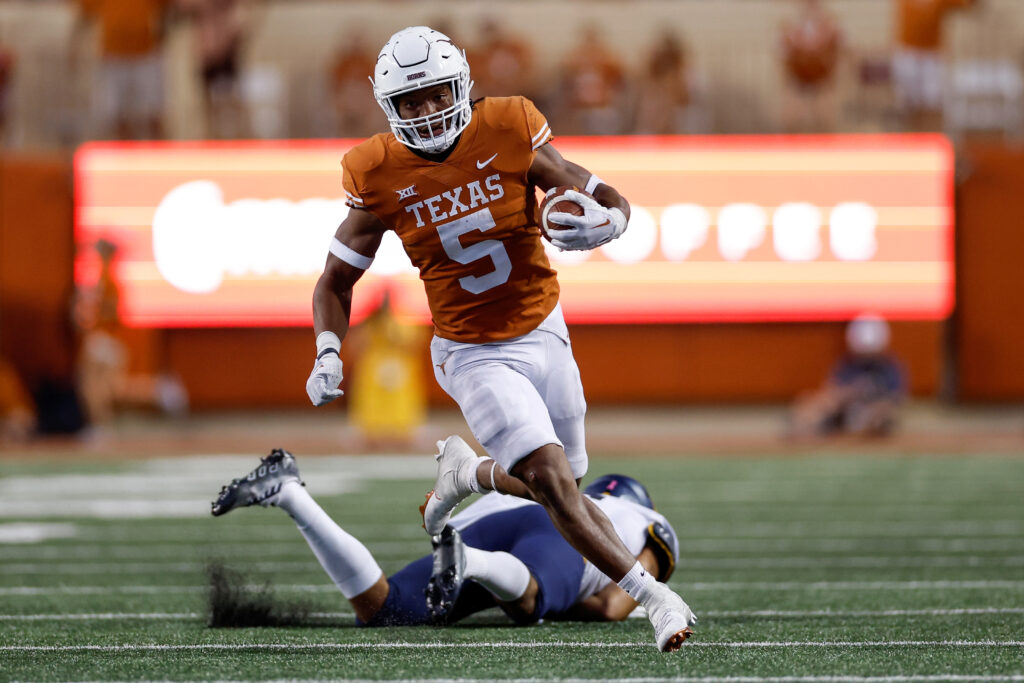
Bijan Robinson might be the best player in the draft
Running backs
The Seahawks have a type at running back. They’ve consistently drafted players with a similar physical profile. Their runners are about 210-220lbs. They have explosive testing results (good vertical & broad jump). It’s made it fairly straight forward to figure out who they might like. Here are the players we identified from the 2016, 2017, 2018, 2020 and 2022 combines as probable targets:
2016:
C.J. Prosise — 6-0, 220lbs, 35.5 inch vert, 10-1 broad
Kenneth Dixon — 5-10, 215lbs, 37.5 inch vert, 10-8 broad
2017:
Chris Carson — 6-0, 218lbs, 37 inch vert, 10-10 broad
Brian Hill — 6-0, 219lbs, 34 inch vert, 10-5 broad
Alvin Kamara — 5-10, 214lbs, 39.5 inch vert, 10-11 broad
Joe Williams — 5-11, 210lbs, 35 inch vert, 10-5 broad
2018:
Saquon Barkley — 6-0, 233lbs, 41 inch vert DNP broad
Kerryon Johnson — 511, 213lbs 40 inch vert, 10-6 broad
Bo Scarborough — 6-0, 228lbs, 40 inch vert, 10-9 broad
Nick Chubb — 5-11, 227lbs, 38.5 inch vert, 10-8 broad
John Kelly — 5-10, 216lbs, 35 inch vert, 10-0 broad
Lavon Coleman — 5-10, 223lbs, 33 inch vert, 10-0 broad
Rashaad Penny — 5-11, 220lbs, 32.5 inch vert, 10-0 broad
Royce Freeman — 5-11, 229lbs, 34 inch vert, 9-10 broad
2020:
Jonathan Taylor — 5-10, 226lbs, 36 inch vert, 10-3 broad
Cam Akers — 5-10, 217lbs, 35.5 inch vert, 10-2 broad
Deejay Dallas — 5-10, 217lbs, 33.5 inch vert, 9-11 broad
AJ Dillon — 6-0, 247lbs, 41 inch vert, 10-11 broad
Zack Moss — 5-9, 223lbs, 33 inch vert, DNP broad
James Robinson — 5-9, 219lbs, 40 inch vert, 10-5 broad
Patrick Taylor — 6-0, 217lbs, 34 inch vert, 10-3 broad
2022:
Breece Hall — 5-11, 217lbs, 40 inch vert, 10-6 broad
Brian Robinson — 6-2, 225lbs, 30 inch vert, 9-11 broad
Dameon Pierce — 5-10, 218lbs, 34.5 inch vert, 9-11 broad
D’Vonte Price — 6-1, 210lbs, 34 inch vert, 9-11 broad
Isaih Pacheco — 5-10, 216lbs, 33 inch vert, 9-10 broad
Jerome Ford — 5-10, 210lbs, 31 inch vert, 9-10 broad
Kenneth Walker — 5-9, 211lbs, 34 inch vert, 10-2 broad
Kevin Harris — 5-10, 221lbs, 38.5 inch vert, 10-6 broad
Snoop Conner — 5-10, 222lbs, 29.5 inch vert, 9-10 broad
Rachaad White — 6-0, 214lbs, 38 inch vert, 10-5 broad
Tyler Allgeier — 5-11, 224lbs, 33 inch vert, 10-0 broad
Tyrion Davis-Price — 6-0, 211lbs, 30 inch vert, 9-9 broad
Zamir White — 6-0, 214lbs, 33.5 inch vert, 10-8 broad
They drafted a player from each of the groups — Prosise, Carson, Penny, Dallas and Walker. They eventually added Bo Scarborough too and admitted significant interest in James Robinson as an UDFA (John Schenider said he was on the brink of signing with the Seahawks, before opting for Jacksonville).
In 2021 the combine was cancelled and in 2019 we identified Alex Barnes, Damien Harris, Alexander Mattison, LJ Scott, Miles Sanders, Dexter Williams and Tony Pollard as possible options. Running back was an unlikely target with the depth they had at the position. With a strong emphasis on special teams improvement they selected Travis Homer in round six mainly because he was considered to be one of the top special teamer’s in the draft. That was more of a special teams exception than anything indicative. Homer has since added weight to try and expand his role on offense.
Key tests
Vertical, Broad, size
Ideal size
5-10, 220lbs, +35 inch vertical, +10 broad
Positional assessment
Texas’ Bijan Robinson might be the best player in the draft. He’ll likely top many boards in terms of grade, depending on how teams view the concerns surrounding Jalen Carter’s maturity. He has superb acceleration to shift up the gears when he breaks into space. He can drive through contact and finish runs. He’s a fantastic receiver. Someone will take him in the top-15, guaranteed. Robinson headlines a deep class full of options. Jahmyr Gibbs is a dynamic runner and receiver who could also go in the top-40. Kenny McIntosh, Zach Charbonnet, Tyjae Spears and Israel Abanikanda all carry second round grades on my horizontal board. There’ll be attractive options deep into round three and beyond — including Chris Rodriguez, Chase Brown, Tank Bigsby, Zach Evans, Roschon Johnson, Evan Hull, Eric Gray, Deuce Vaughan, Devon Achane and DeWayne McBridel. This is probably the deepest position in the draft.
Interesting note
In the past the Seahawks seemed to prefer explosive traits over straight line speed. Christine Michael (4.54), C.J. Prosise (4.48), Robert Turbin (4.50) and Chris Carson (4.58) were better explosive testers than runners. Things have shifted slightly in recent years. Rashaad Penny wasn’t quite as explosive but ran a 4.46. They admitted after the 2022 draft that they thought there were two top-level running backs — Ken Walker (who they drafted) and Breece Hall. Walker ran a 4.38 and Hall a 4.39. It could be that having adjusted to a new blocking scheme, they’re placing a greater emphasis on speed and quickness.
The best drill to watch
It’s nice to see the running backs cutting against pads while showing body control and quickness in the open field. You can tell who has it and who doesn’t in these drills and it’s where Walker really excelled a year ago — looking so good changing direction despite having a very muscular, thick frame. He looked like a beast and moved like a ballerina.
Five names to watch
Bijan Robinson, Kenny McIntosh, Zach Charbonnet, Tyjae Spears, Israel Abanikanda
Potential standout
Little is known of the testing potential of the bigger names so it’s going to be intriguing to see how they get on. For that reason I’ll give a shout-out to Roschon Johnson here. He was ranked 26th by Bruce Feldman on the ‘freaks’ list and can reportedly run at a top-speed of 22.6mph despite being around 220lbs.
Importance to the Seahawks
It’s hard to say. They invested a high pick in Ken Walker despite already bringing back Rashaad Penny. Do they re-sign Penny again? If not, they’ll need to do something at running back. I don’t expect Bijan Robinson to last to #20 (the Seahawks will have a big call to make if he does). I think the great depth at the position means they’ll be able to draft an adequate RB2 later on if needs be and address other positions with their high picks.
The week ahead
Throughout the combine I’ll be producing a live blog updating testing results, followed by a reflective piece at the end of each day. I’ll also be delivering daily live streams to offer thoughts and observations. My podcast partner Robbie Williams is attending the combine and will also provide his own analysis from Lucas Oil Field.
If you enjoy the blog and appreciate what we do, including this 10,000 word combine preview — why not consider supporting the site via Patreon — (click here)
